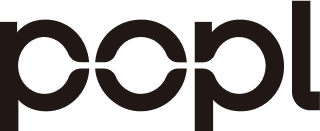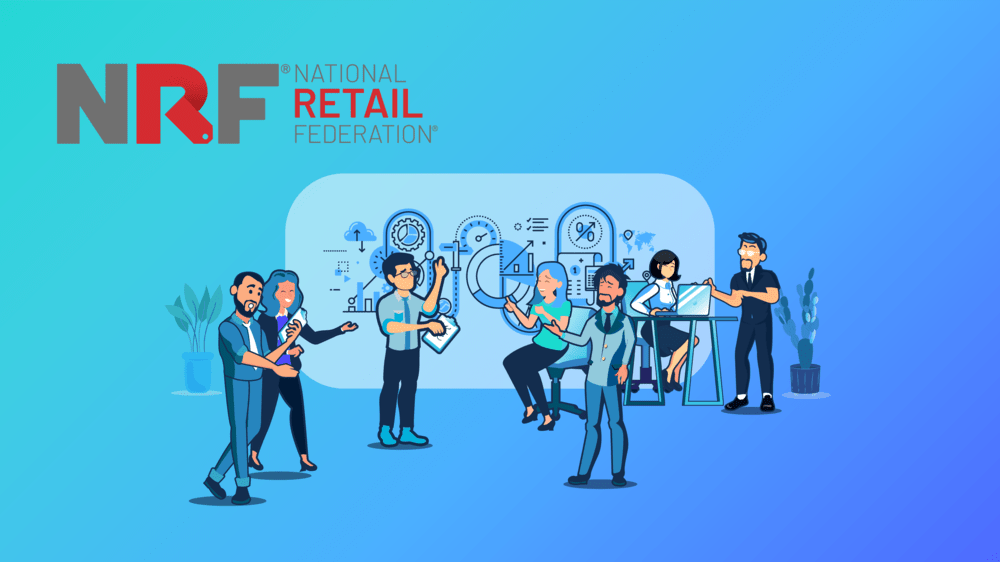Trade shows provide a unique opportunity for businesses to connect with potential leads, showcase their products or services, and build valuable relationships.
However, the success of lead generation at these events hinges on the strategies employed before, during, and after the show. Utilizing technology to streamline lead collection, engaging effectively with attendees, and avoiding common pitfalls are crucial steps.
Moreover, learning from successful case studies can provide actionable insights for optimizing your approach.
This guide will delve into the best practices for collecting leads at trade shows, highlight common mistakes to avoid, and share real-world examples of successful lead generation strategies.
Why Collecting Leads at Trade Shows Is Important for Your Business Growth
Trade shows are bustling hubs of activity where industry professionals, potential clients, and competitors converge. It's the perfect environment for collecting leads, a crucial component for your business growth.
Consider these key reasons why:
-
Immediate Interaction: Unlike cold calls or emails, trade shows allow you to interact with potential clients face-to-face. This immediate interaction builds a stronger connection and enhances the chances of converting leads into customers.
-
Quality Leads: Attendees at trade shows are generally interested in your industry, making them high-quality leads. They are more likely to be receptive to your offerings, thereby increasing the probability of successful conversions.
-
Brand Visibility: Trade shows provide an excellent platform to showcase your brand. Even if some attendees don’t convert immediately, your brand's increased visibility can lead to future opportunities.
-
Competitive Edge: Observing competitors and understanding market trends at trade shows can offer insights that help you refine your strategies, keeping you ahead in the industry.
-
Cost-Effective Networking: Compared to traditional advertising methods, trade shows are cost-effective for networking. The concentrated audience reduces the time and cost per lead acquisition.
Preparing for a Trade Show: Setting Goals and Objectives
Preparation is the bedrock of success at any trade show. Setting clear goals and objectives is pivotal.
Here’s how you can strategically prepare:
-
Define Your Objectives: What do you want to achieve? Whether it's capturing a specific number of leads, launching a new product, or increasing brand awareness, having clear objectives will guide your actions and measure success.
-
Research the Audience: Understand the demographic and professional background of the attendees. This helps in tailoring your pitch and showcasing relevant products or services.
-
Create an Engaging Booth: Your booth should be visually appealing and interactive. Utilize digital business cards with integrated QR codes, allowing attendees to scan and instantly receive your information. This not only captures their interest but also collects their contact information seamlessly.
-
Train Your Team: Ensure your team is well-prepared with product knowledge and sales techniques. Role-playing scenarios can help them handle different types of inquiries effectively.
-
Plan Follow-Up Strategies: Prepare personalized follow-up messages based on the interactions at the trade show. Use CRM tools to manage and nurture these leads. A timely follow-up can significantly enhance conversion rates.
-
Utilize Technology: Tools like Popl digital business cards can streamline the lead capture process. Popl allows you to sync contacts with your CRM, ensuring no lead slips through the cracks. This integration has shown to save up to 40% of the time spent on manual data entry.
Creating an Effective Trade Show Booth to Attract Leads
Designing an eye-catching and functional trade show booth is essential to attract leads and leave a lasting impression. Here’s how to make your booth stand out:
Visual Appeal:
- Bold Branding: Ensure your company’s logo and branding are prominently displayed. Use high-quality graphics and bold colors to draw attention.
- Engaging Layout: Design a layout that invites attendees to explore. Use open spaces, interactive displays, and strategically placed signage.
- Lighting: Use dynamic lighting to highlight key areas and create an inviting atmosphere.
Interactive Elements:
- Digital Displays: Incorporate screens or tablets to showcase product demos, customer testimonials, and engaging videos.
- Product Samples: If applicable, allow attendees to touch, try, or experience your products firsthand.
- Live Demonstrations: Schedule live demos at specific times to draw a crowd and demonstrate your product’s unique features.
Utilize Technology:
- Popl Digital Business Cards: Equip your team with Popl digital business cards to easily exchange contact information with a tap or scan. This not only impresses visitors but also streamlines the lead capture process.
- QR Codes: Place QR codes throughout your booth that link to product information, sign-up forms, or special offers. This makes it easy for attendees to engage with your brand digitally.
Comfort and Hospitality:
- Seating Areas: Provide comfortable seating for visitors to relax and engage in longer conversations.
- Refreshments: Offer complimentary refreshments to attract visitors and create a welcoming environment.
Clear Messaging:
- Concise Signage: Use clear, concise messaging on your signage to communicate your value proposition quickly.
- Elevator Pitch: Train your staff to deliver a compelling elevator pitch that can be tailored to different types of attendees.
According to a survey, booths with interactive elements and digital integration see a 45% increase in visitor engagement compared to traditional setups.

Networking Strategies for Collecting Leads at Trade Shows
Networking at trade shows requires a strategic approach to maximize lead generation. Here are some effective strategies:
- Engage Proactively: Don’t wait for attendees to come to you. Approach them with a friendly greeting and engage them in conversation. Start conversations with open-ended questions to learn more about their needs and interests. This can help tailor your pitch and build a connection.
- Use Digital Tools: Use Popl digital business cards to instantly exchange contact information. This eliminates the need for physical cards and ensures you don’t lose any leads. Sync your lead capture tools with your CRM to manage contacts efficiently. Real-time data collection ensures no lead is overlooked.
- Host Mini-Events: Host short workshops or seminars at your booth to showcase your expertise and attract a larger audience. Organize contests or giveaways to draw visitors to your booth. Collect contact information as part of the entry process.
- Leverage Social Media: Use social media to share live updates, photos, and videos from the trade show. Encourage attendees to visit your booth through engaging posts. Participate in event-specific hashtags to increase visibility and connect with other attendees online.
- Follow-Up Strategies: Send a personalized follow-up message within 48 hours of the event. Mention specific details from your conversation to reinforce the connection. Use automated email sequences to nurture leads. Tools like Popl’s CRM integration can help set up these sequences, ensuring timely and consistent follow-ups.
- Network with Exhibitors: Network with other exhibitors to explore potential collaborations or partnerships. This can expand your reach and lead to mutually beneficial opportunities.
Using Technology to Streamline and Organize Lead Collection Efficiently
In the fast-paced environment of a trade show, leveraging technology can make all the difference in efficiently collecting and organizing leads. Here’s how to incorporate tech tools into your strategy:
Digital Business Cards:
- Popl Digital Business Cards: Equip your team with Popl digital business cards. These cards allow instant contact information exchange via a simple tap or scan, eliminating the need for paper cards and reducing the risk of losing important contacts.
CRM Integration:
- Automated Data Entry: Use digital business cards that integrate seamlessly with your CRM system. For instance, Popl digital business cards sync with popular CRM platforms like Salesforce and HubSpot, automatically importing new contacts and ensuring that your database is always up-to-date.
- Centralized Lead Management: A centralized CRM system allows you to track interactions, set reminders, and personalize follow-ups, making the entire lead management process more efficient.
Lead Capture Forms:
- Customizable Forms: Utilize customizable lead capture forms on tablets or smartphones. These forms can collect detailed information such as name, email, company, and specific interests, which can be directly uploaded to your CRM.
- Instant Follow-Up: Set up automated follow-up emails triggered by form submissions. This immediate response shows potential leads that you value their interest and keeps your company top-of-mind.
QR Codes:
- Interactive QR Codes: Place QR codes strategically around your booth that attendees can scan to receive more information, enter contests, or sign up for newsletters. This not only engages visitors but also captures their contact details effortlessly.
- Trackable Links: Use trackable QR codes to monitor which aspects of your booth are attracting the most attention, allowing you to optimize your strategy in real-time.
Mobile Apps:
- Event-Specific Apps: Some trade shows offer official apps that include features for networking and lead collection. Make sure your team is familiar with these tools and uses them to schedule meetings and follow-up sessions.
- Lead Management Apps: Utilize apps designed for lead management that offer features like business card scanning, note-taking, and direct CRM integration. These apps can streamline the collection and organization of leads on the go.
Analytics Tools:
- Real-Time Analytics: Use analytics tools to monitor the performance of your lead collection strategies in real-time. Track metrics such as the number of leads captured, engagement levels, and conversion rates to make data-driven decisions.
By integrating these technologies, you can significantly enhance your lead collection process, ensuring that no potential opportunity is missed.
Engaging with Potential Leads: Conversation Starters and Ice Breakers
Engaging potential leads effectively is crucial for building relationships and capturing interest. Here are some proven conversation starters and ice breakers:
-
Open-Ended Questions:
- “What brings you to the trade show today?”: This question invites attendees to share their interests and objectives, allowing you to tailor your conversation to their needs.
- “Can you tell me more about your role at [Company]?”: This helps you understand their position and responsibilities, giving you insights into how your products or services might benefit them.
-
Common Interests:
- Industry Trends: “Have you seen any interesting trends or new technologies at the show?” This not only opens up the conversation but also positions you as someone knowledgeable about industry developments.
- Event Highlights: “What has been your favorite part of the event so far?” This question is light and easy, helping to create a friendly and relaxed atmosphere.
-
Product Demos:
- Interactive Engagement: “Would you like to see a quick demo of our latest product?” Offering a hands-on experience can pique interest and provide a natural segue into discussing their specific needs.
- Feedback Requests: “We’re always looking to improve. Could I get your thoughts on our product/service?” This shows that you value their opinion and can lead to a deeper conversation about their pain points.
-
Compliments and Observations:
- Booth or Display: “I noticed you were interested in our display. Is there something specific that caught your eye?” This opens the door to discussing your offerings in more detail.
- Personal Compliments: “I see you have a [product or accessory]. How do you like it?” This can create a personal connection and make the conversation more relatable.
-
Shared Experiences:
- Past Events: “Have you attended this trade show before?” Sharing experiences from past events can create a sense of camaraderie and mutual understanding.
- Local Insights: “Are you familiar with this city? Any recommendations on places to visit or dine?” This casual question can help build rapport and make the interaction more memorable.
Using these strategies, you can engage potential leads in meaningful conversations that not only capture their interest but also build a foundation for lasting professional relationships.

Following Up with Leads After the Trade Show to Convert Them into Customers
The work doesn't end when the trade show is over. Following up with leads promptly and effectively is essential to convert them into paying customers. Here are the steps you can take:
1. Immediate Follow-Up:
- Personalized Emails: Within 24-48 hours, send personalized emails to each lead you met. Mention specific details from your conversation to jog their memory and show that you value the interaction. For example, "Hi [Name], it was great discussing [specific topic] with you at the [Trade Show Name]. I believe our [product/service] could really help with [specific need]."
- Connect on LinkedIn: Send a connection request on LinkedIn with a brief personalized message. This keeps the relationship warm and professional.
2. Segment Your Leads:
- Categorize Leads: Segment your leads based on their level of interest and potential value. Use categories like hot, warm, and cold to prioritize your follow-ups.
- Tailored Messaging: Customize your follow-up approach for each segment. Hot leads might receive a phone call or an invitation to a product demo, while warm leads might get more informational content to nurture their interest.
3. Provide Value:
- Share Relevant Content: Send follow-up emails with valuable content such as whitepapers, case studies, or product demos that address the specific needs discussed during the trade show.
- Exclusive Offers: Offer special discounts or exclusive deals to trade show attendees as a thank you for their interest. This can incentivize them to move forward with a purchase.
4. Schedule Meetings:
- Book Appointments: Use tools like Calendly to schedule follow-up meetings or calls. Make it easy for leads to pick a convenient time for a more in-depth discussion.
- Webinars and Demos: Invite leads to webinars or live product demos to provide them with more information and answer any lingering questions.
5. Utilize CRM Tools:
- Automated Follow-Ups: Use your CRM system to set up automated follow-up sequences that send pre-scheduled emails based on lead behavior. For example, if a lead opens your email but doesn’t respond, they might receive a follow-up email three days later.
- Track Interactions: Keep detailed notes of all interactions in your CRM. This helps in personalizing future communications and understanding where each lead is in the sales funnel.
6. Monitor and Adjust:
- Feedback Loop: After a few weeks, reach out to leads who haven’t responded to gather feedback. Ask if there’s anything specific holding them back and address those concerns.
- Refinement: Use the insights gained to refine your follow-up strategy continuously.
In a study by Spotio, 80% of sales require five follow-up calls after the meeting, yet 44% of salespeople give up after one follow-up.
Measuring the Success of Your Trade Show Lead Generation Efforts
Measuring the effectiveness of your lead generation efforts at trade shows is crucial to understand what worked and what didn’t. Here’s how to evaluate your success:
-
Lead Metrics:
- Number of Leads Collected: Track the total number of leads collected during the trade show. Compare this with past events to gauge performance.
- Lead Quality: Assess the quality of the leads by looking at factors such as company size, decision-making power, and expressed interest.
-
Engagement Metrics:
- Follow-Up Engagement: Measure the open rates, click-through rates, and response rates of your follow-up emails. High engagement indicates strong interest.
- Meeting Attendance: Track the number of follow-up meetings or product demos booked. This shows how many leads are moving further down the sales funnel.
-
Conversion Metrics:
- Conversion Rate: Calculate the percentage of leads that convert into customers. This is a direct indicator of the success of your lead generation efforts.
- Sales Revenue: Measure the total revenue generated from the trade show leads. Compare this with the cost of attending the trade show to determine ROI.
-
Customer Acquisition Cost (CAC):
- Calculate CAC: Divide the total cost of attending the trade show (booth setup, travel, promotional materials, etc.) by the number of new customers acquired. A lower CAC indicates a more efficient lead generation process.
-
CRM Analytics:
- Pipeline Movement: Use your CRM to track how leads move through the sales pipeline. Identify any bottlenecks or stages where leads tend to drop off.
- Lead Scoring: Implement lead scoring to prioritize follow-ups. Leads with higher scores based on their engagement and fit are more likely to convert.
-
Feedback and Surveys:
- Lead Feedback: Send surveys to leads asking for feedback on their experience at your booth and their perception of your company. Use this feedback to improve future trade show strategies.
- Team Debrief: Hold a debrief session with your team to discuss what worked well and what could be improved. Collect insights and ideas for future events.
By analyzing these metrics and continuously refining your approach, you can ensure that your trade show efforts are not only effective but also constantly improving.
By diligently following up with leads and accurately measuring your success, you can maximize the return on investment from your trade show participation and significantly boost your business growth.
Common Mistakes to Avoid When Collecting Leads at Trade Shows
Trade shows provide a prime opportunity for lead generation, but there are several common pitfalls that can undermine your efforts. Here’s what to watch out for:
- Poor Follow-Up: Taking too long to follow up with leads can result in lost opportunities. Aim to send initial follow-up communications within 24-48 hours. Avoid sending generic follow-up emails. Personalized messages that reference specific conversations are far more effective.
- Lack of Personalization: Using a one-size-fits-all approach for all leads fails to address individual needs and interests. Customize your communication based on the information gathered during the trade show. Failing to use the data collected to tailor your approach can make your follow-ups seem irrelevant and impersonal.
- No Clear Call-To-Action: If your follow-up communications don’t include a clear call-to-action (CTA), leads may not know what to do next. Whether it’s scheduling a demo or downloading a whitepaper, make sure your CTA is explicit. Conversely, providing too many CTAs can overwhelm leads. Focus on one clear action you want them to take.
- Failing to Qualify Leads: Not all leads are worth pursuing. Spending time on unqualified leads can detract from efforts to engage with high-potential prospects. Use a lead scoring system to prioritize follow-ups. Without segmenting leads based on factors like interest level or potential value, you risk wasting resources on low-priority contacts.
- Ignoring Lead Nurturing: Conversion often requires nurturing leads over time. Provide valuable content, stay top-of-mind, and build relationships gradually. Failing to maintain regular contact can cause leads to lose interest. Use a mix of emails, calls, and social media interactions to keep them engaged.
- Neglecting Customer Experience: Staff who are unapproachable or unenthusiastic can deter potential leads. Ensure your team is trained to be friendly, knowledgeable, and proactive. A cluttered or uninviting booth can turn away visitors. Invest in a well-designed, engaging booth that attracts attention.
- Not Leveraging Technology: Relying on manual data entry can lead to errors and inefficiencies. Use digital tools like Popl digital business cards and CRM systems to streamline lead collection. Without real-time data capture and analysis, you may miss opportunities to optimize your approach during the event.
- Ignoring Feedback: Failing to seek feedback from both leads and your sales team can result in missed opportunities for improvement. Regularly collect and act on feedback to refine your strategy. Addressing only positive feedback while ignoring negative comments can lead to recurring issues. Use constructive criticism to enhance your lead generation efforts.
Conclusion
In the competitive landscape of trade shows, efficient lead collection and effective follow-up strategies can significantly impact your business’s success.
By leveraging technology such as digital business cards and CRM integrations, personalizing your follow-up communications, and continuously measuring and refining your approach, you can maximize your return on investment.
Avoiding common mistakes like delayed follow-ups, lack of personalization, and ignoring feedback will further enhance your lead generation efforts.
Drawing inspiration from successful case studies, you can implement proven tactics to attract, engage, and convert leads, ultimately driving growth and achieving your business objectives.















